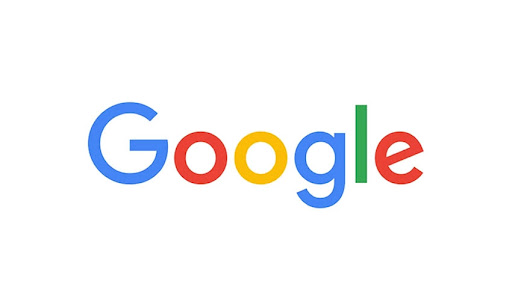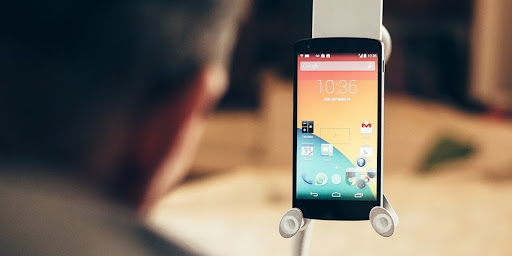
National Disability Independence Day is celebrated every year on July 26 to commemorate the signing of the Americans with Disability Act (ADA) in 1990 by President George H.W. Bush. It criminalizes the discrimination against individuals with disabilities and assures them full participation in the community, independent living, and economic self-sufficiency.
The ADA’s provisions have helped to transform American society, further advancing independence, inclusion, and equality of opportunity for millions of Americans with disabilities. According to the ADA National Network, “Today, one in four Americans with disabilities are able to participate in their communities and workplaces thanks to the ADA.”
The ADA has curated an environment of true inclusion within all areas of life for those with disabilities. Companies and advocates are bringing more awareness to the topic, which in turn, is furthering the mission of the ADA. Here’s a deeper look into how true inclusion is progressing:
What Is the American Disabilities Act?
The ADA was designed to build on the progress of the Rehabilitation Act by expanding the rights of the disabled community in a single law to ensure their freedom from employment discrimination and access to all levels of government, public establishments, transportation, and communication.
In a moving ceremony at the White House on July 26, 1990, President George H.W. Bush signed the ADA into law with a nearly deafening round of applause from more than 3,000 people in attendance — many with disabilities, disability rights activists, and advocates.
“With today’s signing of the landmark American Disabilities Act, every man, woman, and child with a disability can now pass through once-closed doors into a bright, new era of equality, independence, and freedom,” he declared.
Pictured: President George H.W. Bush signing the ADA Source: PVA
However, U.S. Supreme Court cases severely limited the definition of “disability.” In Sutton v. United Airlines, the court ruled in favor of United Airlines, which refused to recognize twin sisters Karen Sutton’s and Kimberly Hinton’s visual myopia as a disability.
Despite the fact that their conditions were fully correctable, the airline denied them employment. In Chevron USA, Inc. v. Echazabal, Mario Echazabal’s claim that Chevron wouldn’t recognize his liver condition as a disability was denied, thus upholding his termination from work with the company.
Later, Congress bolstered protections when it passed the ADA Amendments Act of 2008 (ADAAA). This expanded the definition of “disability” — effectively nullifying the controversial decisions by the highest court and enabling many more individuals to qualify for protection under the ADA.
Additional regulations issued by the U.S. Access Board in 2017 further expanded the Section 508 Standards to include access to current-generation electronic and digital assets. The ADA is divided into five titles (or sections) that relate to different areas of public life:
Employment Title I requires covered employers to provide reasonable accommodations for applicants and employees with disabilities and prohibits discrimination on the basis of disability in all aspects of employment.
Under Public Services Title II, public services cannot deny services to people with disabilities or deny participation in programs or activities that are available to people without disabilities.
Public Accommodations Title III includes facilities such as restaurants, hotels, grocery stores, retail stores, etc., as well as privately owned transportation systems. It requires that all new construction and modifications must be accessible to individuals with disabilities. For existing facilities, barriers to services must be removed if readily achievable.
Telecommunications Title IV concludes that telecommunications companies offering telephone service to the general public must have telephone relay service to individuals who use telecommunication devices for the deaf (TTYs) or similar devices.
Miscellaneous Title V includes a provision prohibiting either (a) coercing or threatening or (b) retaliating against individuals with disabilities or those attempting to aid people with disabilities in asserting their rights under the ADA.
To learn more about the American Disabilities Act, click here.
Companies That Go Above and Beyond
Employment is often critical to the well-being and independence of people with disabilities. Due to their challenges, however, disabled workers commonly face obstacles to finding and maintaining a job in traditional work settings.
While some of these obstacles can be eliminated with flexible work arrangements, such as remote jobs and flexible schedules, other barriers can arise and must be addressed within the workplace.
According to the World Health Organization (WHO), employment and participation barriers for those with special needs are defined as factors limiting function and creating disability through their presence or absence.
These factors are divided into categories like physical, social, communication, attitudinal, policy, programmatic, and transportation and can include other barriers such as a physical environment that is not accessible, lack of assistive technology, and more.
Recognizing the need to advocate for greater diversity in the workplace and advance opportunities for all, many employers are removing employment obstacles for professionals with disabilities.
Below is a list of companies honored for their efforts to foster a more inclusive and accessible work environment:
3M received a 100% score on the 2019 Disability Equality Index. Alongside flexible work arrangements and physical accommodations, 3M supports workers with disabilities by providing access to employee resource groups.
One such group is the disAbility Awareness Network (dAN). Describing disabilities as strengths, the network promotes a workplace that embraces disabled people and seeks to increase education and awareness on disability issues in 3M’s culture.
Distinguished with multiple awards for its disability inclusion advocacy efforts, Accenture provides disabled workers with the latest technology, tools, and training to create a barrier-free workplace.
These efforts include leadership and career growth programs, Accessibility Centers, and more. Beyond its own work environment, Accenture is committed to helping other enterprises support prospective and current team members with disabilities to build more inclusive cultures for all.
Google works to ensure its hiring process is fair and accessible and that its workplace works for everyone. It supports disabled employees with the necessary tools to perform their jobs, participate in activities and opportunities, and experience a barrier-free interview process.
Google also offers the employee-founded Disability Alliance, which leads projects like accessible product hackathons and helps Google improve disability inclusion by building awareness at all levels of the organization.
Sephora’s distribution centers are partnering with communities, local advocacy groups, and educational institutions across the country to recruit individuals with disabilities. The brand provides training and support to help enable independence and self-sufficiency.
Tucker Morgan, the general manager of the Sephora Las Vegas Distribution Center, said in regards to hiring those with disabilities, “Our employees with disabilities are truly fearless and have inspired us to focus first on our abilities and I will forever be grateful.”
Disability Rights Activists Changing the World
While the ADA has provided many rights for disabled individuals, disability rights activists have worked tirelessly to help create change all throughout history. Here are three extraordinary people whose work has undoubtedly had an impact on disabled people’s lives:
Dr. Victor Pineda
Pictured: Dr. Victor Pineda Source: Respect Ability
Dr. Victor Pineda was diagnosed with spinal muscular atrophy Type II as a child and uses a ventilator 24 hours a day. An expert on building accessible and inclusive cities, he’s a social development scholar consultant, and an international speaker.
Using his Ph.D. in business and urban development, Dr. Pineda has consulted with and advised more than 500 influential organizations, as well as the government, on developing disability-friendly policies and inclusive design.
In 2003, he launched World Enabled (also called the Pineda Foundation). It combines the efforts of disabled persons’ organizations and intergovernmental agencies from across the world to help build inclusive societies and promote the rights of people with disabilities.
Dr. Pineda is an honorary president of the Global Alliance for Accessible Technologies and Environments, which is an organization aimed at encouraging accessibility in the built and virtual worlds. He was also the youngest person to participate in the drafting of the United Nations Convention on the Rights of Persons with Disabilities.
Alice Wong
Pictured: Alice Wong Source: Catapult
Alice Wong, who has spinal muscular atrophy, founded the Disability Visibility Project, which works to “create, share and amplify disability media and culture” by collecting historical recordings of interviews with disabled people in the United States.
Wong has a Master of Science degree in Medical Sociology and worked as a researcher at a university for 10 years. During that time, she was involved in a number of disability-related research projects and co-wrote numerous research papers.
She has been recognized for her work in activism with a number of awards. These awards include a Beacon Award for leadership on behalf of disabled people and a Disability Service Award for using her research to advance access and accommodation for disabled people.
Wong served as a member of the National Council on Disability, to which she was appointed by President Barack Obama. She’s also a board member for Asians and Pacific Islanders with Disabilities of California, which aims to give a voice to Asian and Pacific Islanders with a disability.
In addition to the Disability Visibility Project, Wong is a co-partner on DisabledWriters.com, which helps editors find disabled writers and journalists; #CripLit, a way for disabled writers to connect on Twitter; and #CripTheVote, which encourages disabled people to take part in politics.
In 2015, she attended a reception at the White House for the 25th anniversary of the Americans With Disabilities Act via telepresence robot. She was also the first person to visit the White House and the President by robot presence.
Emmanuel Ofosu Yeboah
Pictured: Emmanuel Ofosu Yeboah Source: Primary Source Pairings
A Paralympic athlete and activist from Ghana, West Africa, Emmanual Ofosu Yeboah was born in 1977 without a right shin bone, which resulted in a severely deformed leg. In Africa, disabled people are believed to be cursed, causing them to be shunned from society
In fact, Emmanual’s own father abandoned him, but his mother stood by him, pushing Yeboah to pursue his dreams. He attended school, which he had to hop more than two miles to get to, but left home at the age of 13 to provide for his family by shining shoes.
Yeboah wanted to bring attention to the plight of disabled people, so, in 2001, he rode 400 miles across Ghana to show people that disability doesn’t mean inability. Along the way, he spoke to disabled children and gave speeches to church leaders and dignitaries.
After completing the cross-country trek, the Challenged Athletes Foundation (CAF), which gave him a grant for the bike ride, invited him to participate in the Triathlon Challenge in California. He completed the 56-mile event in seven hours.
While in the USA, Yeboah was told that he was eligible for a prosthetic leg, which he was offered for free. Following a successful surgery and a six-week recovery, Yeboah entered the CAF Triathlon Challenge again, reducing his time by three hours.
Yeboah was subsequently awarded the CAF Most Inspirational Athlete of the Year Award and Nike’s Casey Martin Award for Paralympic sporting achievements, receiving approximately $50,000.
Upon returning to Ghana, Yeboah used the money to open the Emmanuel Education Foundation for promising students with disabilities. He is currently working on building schools for children in Ghana, with or without disabilities.
Product Innovations and Technologies To Take Note Of
In recent years, a number of exciting and welcome advances have been made by leading tech companies, universities, and cities, which have made their products or services more accessible to people with disabilities. In doing so, they inspired us and gave us a look at possibilities that may be on the horizon.
Here are a few of our favorite examples of exciting innovations for disabled individuals from the past few years:
Amazon’s “Show and Tell”
Pictured: Individual using Amazon’s “Show and Tell” feature Source: GeekWire
In 2017, Amazon announced the launch of “Show and Tell,” a new feature of its flagship digital home assistant device designed to help users with vision loss more effectively navigate their own cupboards.
Amazon notes: “With Show and Tell, blind and low vision customers can hold up an item to the Echo Show camera and ask, ‘Alexa, what am I holding,’ and Alexa helps identify the item through advanced computer vision and machine learning technologies for object recognition.”
Watch this video to learn more about Amazon’s “Show and Tell” feature.
Harvard Astronomy Lab’s New Technologies
Pictured: Visually impaired individuals using Harvard’s new technology Source: The Harvard Gazette
For years, Harvard’s Clay Telescope has given visitors a surreal view of faraway skies and planets. Now, the Ivy League school is focused on bringing that beauty to those who can’t see it in a traditional manner.
As reported by the Harvard Gazette, the school is offering cutting-edge technologies to visitors with vision impairment, capable of translating light into sound. This, the Gazette notes, gives them the chance to quite literally listen to the stars they can’t see.
To learn more about how Harvard is bringing space to the visually impaired, click here.
Open Sesame App
Pictured: Individual using the Open Sesame app to control their phone Source: WIRED
The Open Sesame app grants people with paralysis, or other conditions such as ALS, control over their Android tablet and phone with head movements. Voice control is also integrated to provide a truly hands-free experience for accessing the device.
Open Sesame’s mission is to open a new door for millions who have been left outside the smartphone revolution due to limited or no hand movement. Since providing renewed independence for thousands of people, the application has also created a version for Windows PCs and laptops.
Check out this interesting story on YouTube that shows the impact Open Sesame can have on disabled users.
One Button Computers
Pictured: Individual using a one-touch computer known as Komp Source: No Isolation
For disabled people and other senior citizens, using modern technology can be extremely challenging. Therefore, Norwegian startup, No Isolation, kickstarted the Komp project with the aim to make modern technology accessible for disabled individuals and those of old age.
Komp allows individuals to contact their friends and family by just pressing one button. By switching the device, users can view calls, and messages, answer video calls or look at what their loved ones have sent via a large non-touch display.
You can learn more about Komp and view its user guide here.
AI-Powered Smart Canes
Pictured: Individuals using a smart cane Source: My Modern Met
Millions of people depend on visual impairment tools to live an independent life. Assistive technology is taking the initiative to transform canes into more intelligent and life-changing tools. Some smart canes have a built-in speech assistant that can take commands for different functions.
Others feature high-tech handles and smart sensors that can identify roadblocks, obstructions, and hindrances on streets, roads, and parks and alert the user. Not only that, but the users can also connect their smart canes with their devices to find the different locations and receive information on public transportation.
You can learn more about smart canes here.
The HBM Firmly Stands With Inclusion
With National Disability Independence Day coming up, we are offered a chance to celebrate just how far we’ve come in terms of inclusion for individuals with disabilities. Businesses and activists are driving this revolutionary social change, and it’s truly beautiful to see it happening right in front of our eyes.
The Human Beauty Movement believes that this change should be looked at as an opportunity. Our world is filled with unique humans from all walks of life who bring special views, ideas, and innovations to the table, and our world can greatly benefit from the inclusion of all people.
The HBM exists to champion radical inclusion, wellness, and a thriving environment for all. Think of it as a positive tribe of individuals where love, acceptance, and kindness live and thrive. Take this opportunity to join now. We look forward to welcoming you to The Human Beauty Movement.
Let’s drive this beautiful inclusion revolution forward, together.






























